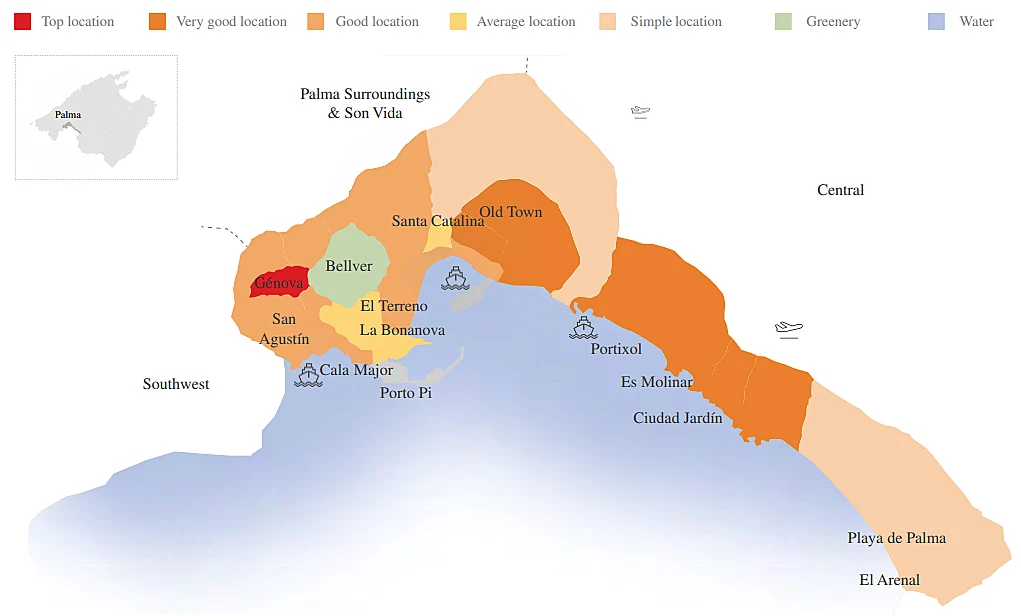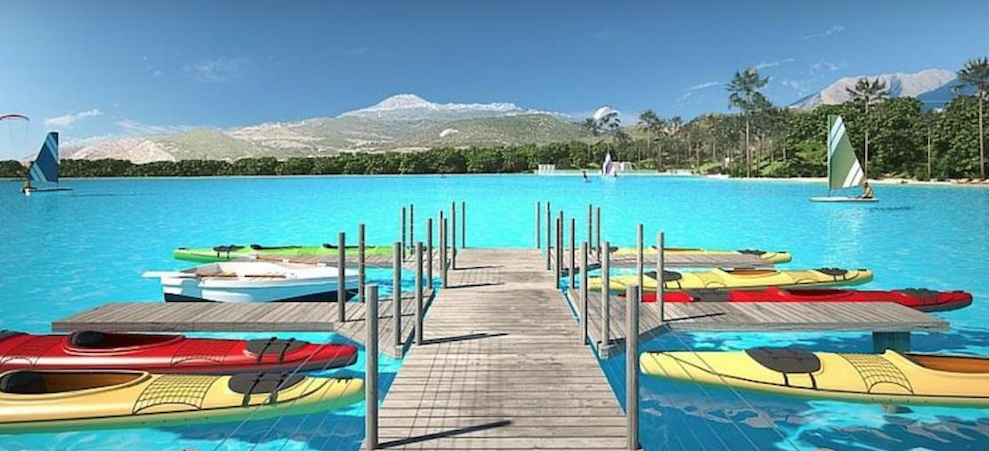(Editor’s note: This post on moving to Spain is the fourth in a continuing series looking at the best countries in Europe for American expats. You can read the introductory post here. You can read about France here and the Netherlands here.)
More than ever, there is a trend for Americans to acquire a second luxury property in Europe. The reasons are manifold: lower house prices, better quality of life, the weather and the favorable exchange rate of the Dollar against the Euro. How long that will last is anyone’s guess, but, right now, Americans take advantage of the situation.
Spain, next to Italy and France is their favorite destination.
The details:
Can Americans buy property in Spain? The answer to that question is “yes.” But, bear in mind the process is very different to the United States. Many steps are necessary and overall, it’s more formal. The first thing you need is to find a good attorney who speaks English and a trustworthy realtor.
Here you find the steps necessary to complete a property purchase and info on which visa to get. The Golden Visa is the best way. Apply for it before you come to Spain at your nearest Spanish consulate.
The Golden Visa allows you to stay in the country for six months at a time, has a validity for two years and makes it easier to become a resident if you buy your property as a long term second home. The main requirement is investing 500,000 euros.
Other questions that will determine your decision to move to Spain – be it permanently or temporarily – include:
• is English spoken widely?
• are the locals friendly?
• are international schools available?
• are there available properties
This depends on the location you have your eyes set on and we will deal with these as we describe the individual locations Americans favor.
Madrid and Barcelona are still on top of the list, but house prices in these cities are much higher than in rural areas. This is followed by the so called Sun Belt, which, in Spain is very wide. The proximity of the sea and beaches is always popular. It’s just the North, Galicia and Basque country where you have the sea and beaches, but where it also rains a lot.
Madrid is very hot in the summer and very cold in the winter and of course is not by the sea although the city features vast parks( El Retiro) and other advantages of a big city.

Mallorca
The Balearic island of Mallorca is ideal for a second home for Americans, which is why it has become increasingly popular.
For decades, foreign home buyers have flocked to the island, which is why there are big expat communities, mainly German, British and Scandinavian and the result is that English is spoken widely.
The locals are generally friendly and welcoming because tourism is their main source of income.
According to international estate agents Engel & Voelkers the current prices for property, depending on
the region of Mallorca , range from 400,000 euros to more than 1 million euros.
As can be expected, prices in the capital, Palma de Mallora, are highest. Other more affordable options are in Alcudia and Pollensa. The above link gives a very good overview of the current property prices, although based on villas and fincas, often with a big plot of land, not apartments.
International Schools
There are 17 international schools on Mallorca. Here is a list of where they are.
Mallorca is a beautiful island, with fabulous beaches, forests (towards the interior), mountains, museums and culture, art galleries, especially in Palma. There are additional attractions including a historic railway, the Soller train, and a monastery in Valldemosa where Chopin and Georg Sand lived.

Murcia
The growing interest in Murcia reflects the trend to move away from big cities and go more inland. Murcia is a town and a province in the SE of Spain on the Costa Calida. Many locations in the Province border the sea whereas the city itself Is crossed by the river Segura.
Murcia is one of the most affordable regions in Spain and with its lively life and favorable climate often called The California of Spain. Plenty of properties, apartments as well as villas, are available in Murcia province. The average prices depend on the location, but they are considerably lower than in Mallorca.
Murcia is a university town. English is widely spoken due to the many international students here. Expat communities also exist, especially closer to the sea. Apart from the University there are international schools in Murcia, among them a Montessori school.
Here’s the link to a guide.
Another moniker for Murcia is “Garden of Spain” because of its many orchards and vegetable plantations. Although one-third of the province is desert, the rest is green and fertile. Not much rain falls in Murcia, the summers are hot and the winters are mild. An ideal location to move to as an increasing number of Americans discover.
If as an American, you decide to move here, you can join this American expat network for company and advice.
The Sun Belt
We have mentioned above that another region where Americans love to buy property ,is Spain’s sunbelt. That refers mostly to the Costa del Sol in Andalusia in the south and the locations along the Mediterranean Sea. This coastal part of Spain is 150-kilometers long and stretches from Malaga to the Province of Cadiz with many towns and villages in between.
The most famous and most desirable is probably glamorous Marbella, but Marbella also is the most expensive. See the increase of sales over the last years in the Marbella property report here.
You can read an interesting comparison to the property market in the US here in the Economist.
The farther you go inland, the cheaper the properties become. An example is Estepona or Torremolinos.
Costa del Sol
The Costa del Sol has been in demand since many years (Marbella since the mid 1950s) and many foreigners have bought here. That is why the region has an international flair with big expat communities. English is not a problem.
The locals along the “Costa” are friendly and welcoming as is indeed the characteristic of all of Andalusia.
Of course, you will always find a grumpy soul somewhere: just ignore them.
Be aware that all the locations along the Costa del Sol are quite touristic in summer as well as in winter as Marbella has the warmest winter climate in all of Europe. This is not a place if you look for seclusion and solitude, unless you find a big property with a huge wall around it, but that will costs you dearly if you could even find it.
As we said, the more inland you look, like Benalmadena Pueblo or Manilva the less you have to pay.
The huge number of expats in the region accounts for many international schools. Here is a guide to all of them, some with reviews.
If in future more Spanish locations favored by Americans emerge, we will let you know.
Inka Piegsa-Quischotte is an international attorney-turned-travel and lifestyle writer based in Spain. She has contributed to BBC/Travel, several in-flight magazines, TripSavvy (Spain) and TravelAwaits among many other publications.














